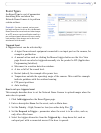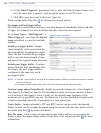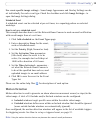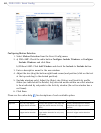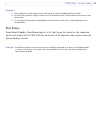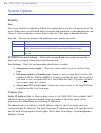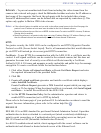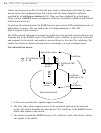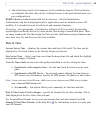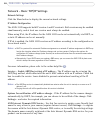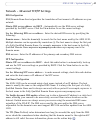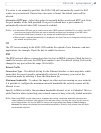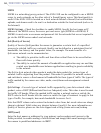
43
AXIS 233D - System Options
Referrals - To prevent unauthorized clients from including the video stream from the
cameras into external web pages, check the Referrals checkbox and enter the IP address or
host name of the computer that hosts the web pages with the included video stream.
Several IP addresses/host names can be defined and are separated by semicolons
(;). This
option only applies to Motion JPEG video streams.
Notes: • If the referrals feature is enabled and you wish to also allow normal access to the Live View page, the
product's own IP address or host name must be added to the list of allowed referrers.
• Restricting referrers has no effect on an MPEG-4 video stream. To restrict an MPEG-4 stream, IP address
filtering must be enabled.
• Restricting referrers is of greatest value when not using IP address filtering. If IP address filtering is used,
then the allowed referrers are automatically restricted to those allowed IP addresses.
HTTPS
For greater security, the AXIS 233D can be configured to use HTTPS (Hypertext Transfer
Protocol over SSL (Secure Socket Layer)). That is, all communication that would otherwise
go via HTTP will instead go via an encrypted HTTPS connection.
Certificate - To use HTTPS for communication with the AXIS 233D, a certificate must be
created. A self-signed certificate can be created in the network camera, but this does not
guarantee the same level of security as an official certificate issued by a Certificate
Authority (CA). A CA issues and manages security credentials and public keys for message
encryption. To create a certificate follow the instructions below:
1. Click either Create self-signed certificate or Create Certificate Request and enter
the required information in the provided fields.
2. Click OK.
3. Create self-signed certificate generates and installs a certificate which displays
under Installed Certificate.
Create Certificate Request generates a PEM formatted request which you copy and
send to a CA for signing. When the signed certificate is returned, click Install signed
certificate... to install the certificate in the AXIS 233D.
4. Set the HTTPS Connection Policy for the administrator, operator and viewer to
enable HTTPS connection (set to HTTP by default)
Please refer to the home page of your preferred CA for information on where to send the
request. For more information, please refer to the online help files
.
IEEE 802.1X
IEEE 802.1X is an IEEE standard for port-based Network Admission Control. It provides
authentication to devices attached to a network port (wired or wireless), establishing a
point-to-point connection, or, if authentication fails, preventing access on that port.
802.1X is based on EAP (Extensible Authentication Protocol).
In a 802.1X enabled network switch, clients equipped with the correct software can be
authenticated and allowed or denied network access at the Ethernet level.





